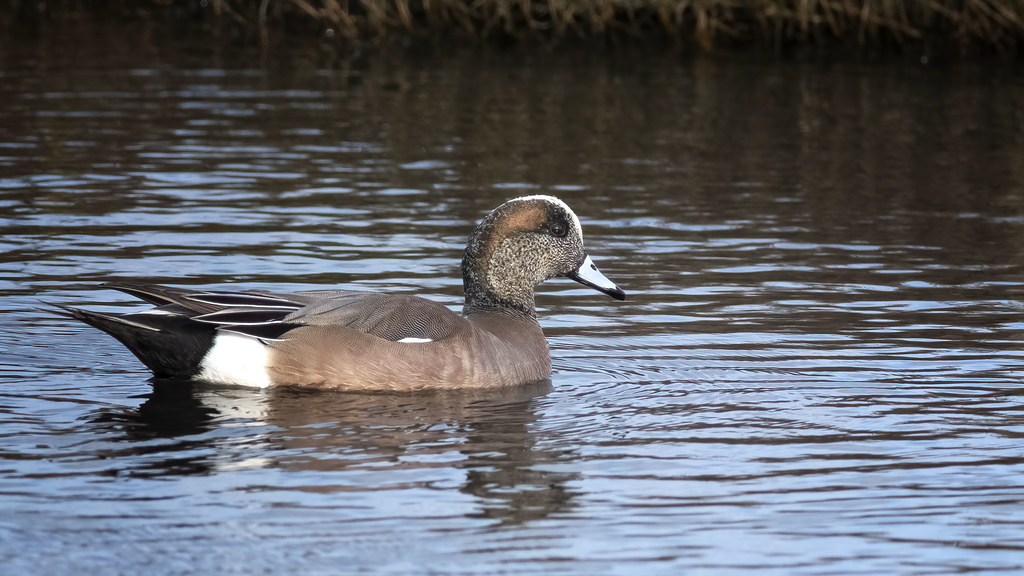#Richardson Bay
Text
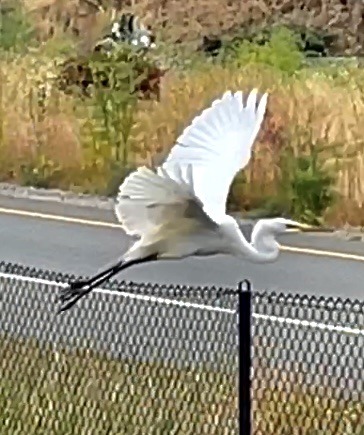





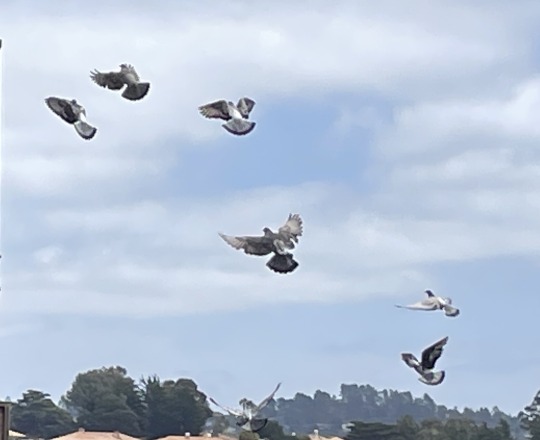
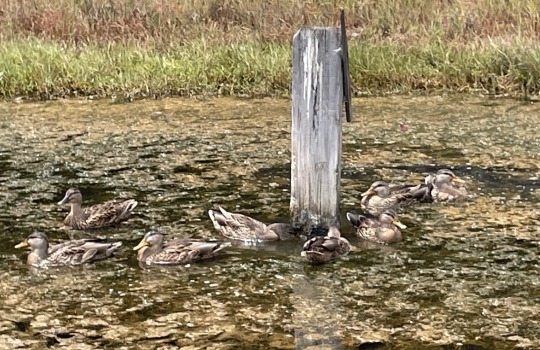

Walkies 6/22/23
#nature#great egret#white morning glories#orchid#barnacles#mt tamalpais#ducks#pigeons#richardson bay
2 notes
·
View notes
Video
Wigeon by Veit
Via Flickr:
An American Wigeon in our local marsh
#Bayfront Meadow#Bayfront Park#CA#California#Hauke Park#Marin#Marin County#Mill Valley#Pickleweed Inlet#Richardson Bay#1.4x TC#400mm#Camera#Canon 400mm#Canon 400mm f5.6/L#EF lens#EF lenses#Extender#Fringer adapter#Fuji#Fuji X-H2S#Fujifilm#Fujifilm X-H2s#Lens#Mirrorless#Objektiv#Photo#Teleconverter#X-H2#X-H2s
4 notes
·
View notes
Text

Wray Avenue, Sausalito, California
2 notes
·
View notes
Text






#cardiff devils#ice hockey#welsh#cymru#joey martin#josh batch#eihl#puck#fighting#cardiff bay#ice arena wales#ben bowns#riley brandt#cole sanford#joshua waller#trevor cox#goaltender#hockey#sam duggan#ben davies#cymraeg#wales#🏴#professional#sport#sports photography#mark Richardson#jason stone#andrew lord#pete russel
3 notes
·
View notes
Photo










SOUTHLAND TALES (2006)
Director: Richard Kelly
Cinematography: Steven Poster
#southland tales#richard kelly#donnie darko#dwayne johnson#the rock#sarah michelle gellar#seann william scott#justin timberlake#mandy moore#bai ling#miranda richardson#cheri oteri#amy poehler#kevin smith#zelda rubinstein#beth grant#janeane garofalo#2000s#2000s movies#sci fi#dystopy#cinematography#screencaps#screenshots#movie screencaps#movie screenshots#film screencaps#film screenshots#film frames#movie frames
43 notes
·
View notes
Text
Would I consider not writing about my family? Ashton Deroy explains.
Written by Ashton Deroy
People have asked both interior and exterior to my family. Would I consider not writing about things? Letting stuff go or granting a bit more privacy. Maybe just having conflicts be between the parties involved. That is a fair question. I am actually going to grant it as fair for a reader to ponder. I am also going to say NO! The answer to all of life’s problems are not…

View On WordPress
#ADHD#Ashton Deroy#Autism#Bay of Quinte#Belleville Ontario#Biography#Debt#Drunk#Economics#Healthcare#Kimberly Hill Richardson#Kingston Ontario#LGBT#LGBTQ#Loyalist College#Marketing#MJ&039;s Property Care#Ottawa#Quinte West#Secular#Secular Humanism#Seneca#Socialism#Socialist#St. Lawrence College#Stirling#Tiernan Peever#Toronto#Young adult death
0 notes
Text
#detroit lions#green bay packers#sam laporta#dan campbell#jordan love#trevor lawrence#jacksonville jaguars#cj stroud#anthony richardson
1 note
·
View note
Text
Lake Tahoe Golf Course recognized for environmental excellence | South Lake Tahoe
Lake Tahoe Golf Course recognized for environmental excellence | South Lake Tahoe
Lake Tahoe Golf Course has retained its designation as a “Certified Audubon Cooperative Sanctuary” through its international program for golf courses.
Efforts were led by Golf Course Superintendent Bobby Jaeger to earn the recognition again.
Participation is designed to help course personnel plan, organize, implement, and document a comprehensive environmental management program and receive…

View On WordPress
#Camp Richardson#Cave Rock#Emerald Bay#Heavenly#Lake Tahoe#Meyers#Round Hill#South Lake Tahoe#Stateline#Zephyr Cove
0 notes
Text
“--bleeding–”
“Shit–get an–”
“--r. Wayne!”
Ow.
Bruce vaguely remembers shouting. There’d been an escape. Crane had…Crane hadn’t. Crane hadn’t been there at the time, had he? No, no, he was…what…
“Move, all of you.” Richardson’s voice is clipped. “Somebody call an ambulance. Get me my supplies.”
This last is directed at Crane, who vanishes off somewhere. Martinez is on the phone for an ambulance, and Gordon is keeping the crowd at bay. That’s right. He’d been–there’d been a small meeting of investors, looking to clean up Arkham, but somebody had gotten out, gotten a gun.
“Here.” Crane sounds deeply displeased. “What have we learned from this, gentlemen?” Bruce, lying flat, still feels those piercing eyes settle on the rookie that spooked the inmate. “When I say I will handle my patients, let me.”
“Sorry, doc.”
“Hm. Nurse?”
Richardson’s freezing fingers press gauze against his leg. He’s been shot before, but not out of the suit and…it hurts. It hurts rather a lot.
“Missed the artery…you’re lucky, Mr. Wayne.” He doesn’t like her being this close. Surely she wouldn’t do anything, not with all these people, but… “Status on the ambulance?”
“Ten minutes.”
Crane mutters something that might be, tax dollars at work. If anybody else hears him, they don’t say anything.
“Pass me–ta.” A wet, cold cloth presses against his leg now. The flinch is mostly genuine. “Antiseptic,” she says easily. “Sorry for the chill, but I’ve seen infections in here that would spook the Batman.”
Bruce tries to force a laugh. His head is starting to swim, but he hasn’t lost enough blood to…to…
More gauze. Crane crouches down, head tilted a little like a bird’s, and Bruce forces himself to make eye contact. Or try to, anyway–from this angle, Crane’s glasses are catching the light in such a way that his eyes are hidden.
In the distance, there’s the wail of an ambulance. A flicker of a smile dances across Crane’s lips, but before anything else can happen, Richardson is driving her palm against the hole in his leg and Bruce’s attention becomes consumed by painpainpain.
“There we go,” she says. “You’ll be just fine, I think.”
Did she always have teeth that sharp?
#written while on hold to fedex#who lost my package#AGAIN#battinson#jonathan crane#kitty richardson#bruce wayne#they saw their chance and took it#bruce is gonna have a bad night#ficlet
20 notes
·
View notes
Text

The B-21 Raider: Designed For Low Risk
head-on view of B-21
Images released during the week of the Air and Space Force Association’s Air, Space & Cyber Conference revealed a head-on view that allowed for a reliable estimate of the wingspan.
Credit: Northrop Grumman
The design of Northrop Grumman’s B-21 Raider points to a conservative approach on the part of the U.S. Air Force’s Rapid Capabilities Office. The B-21’s resemblance to the original B-2 bomber design is close, but it is a smaller aircraft, with a wingspan estimated at 132 ft. compared with the B-2’s 172 ft., and is approximately half the empty weight. The planform itself is driven by the need to accommodate complex inlets and exhausts and a large weapon bay within the flying-wing profile while staying within a maximum thickness-to-chord ratio compatible with efficient flight above Mach 0.8.

Planform of two bombers
Credit: Giuseppe Picarella/TheCutawayCompany.com
The B-21 planform, which has not been officially released, was depicted in a video that accompanied a presentation by Gen. Duke Richardson, commander of the U.S. Air Force Materiel Command, on Sept. 11 at the Air and Space Force Association’s (AFA) Air, Space & Cyber Conference at National Harbor, Maryland. A new set of images released that week included an undistorted head-on view that permitted a reliable estimate of the wingspan. Recently recovered unclassified imagery from Pratt & Whitney presentations dating back to the early 2010s proved to be a close match for the B-21’s inlets.
U.S. Air Force Rapid Capabilities Office prioritized use of mature subsystems
Northrop draws on aspects of B-2 bomber and X-47B UCAV
The B-21’s low-risk design in part stems from the program’s origins. Before 2009, the Air Force was working to a requirement known as Next-Generation Bomber (NGB). It has been characterized as complex and ambitious, with a full suite of intelligence, surveillance and reconnaissance (ISR) sensors, a self-defense capability and long endurance. This was canceled in April 2009 by then-Defense Secretary Robert Gates.
The following year, the Air Force proposed a different approach to the mission, which Pentagon leadership found acceptable: a Long-Range Strike family of systems including classified uncrewed aircraft systems for ISR and electronic attack (the former becoming the Northrop Grumman RQ-180), a replacement cruise missile (now the Raytheon AGM-181) and the Long-Range Strike-Bomber (LRS-B), for which a contract was awarded to Northrop Grumman in October 2015.
Aside from scrubbed and scaled-back requirements, the LRS-B project differed from NGB in three ways: Unit cost was a key performance parameter; two competing teams were funded through preliminary design review, which normally takes place after contract award; and management was assigned to the Air Force’s Rapid Capabilities Office (RCO). The RCO modeled its approach on the Lockheed F-117, developed using mature subsystems in a new platform so that the program could focus on applying new technology.
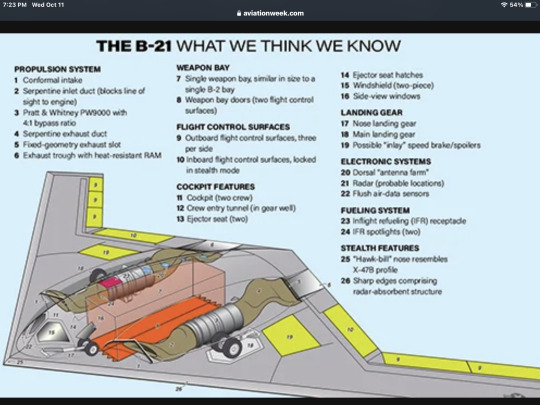
B-21 diagram
Click on this image to see an interactive version of a microcutaway of design features likely on the U.S. Air Force's next stealth bomber.
The B-21 emerging today is evidence that these principles have been adhered to. Its configuration and stealth technology have evolved from the “flying saucer” approach used on the B-2, but originally proposed in the late 1950s. Remarkably, Lockheed Martin Skunk Works founder and former chief Clarence “Kelly” Johnson, in a retrospective paper delivered in 1975 and quoting pre-SR-71 Blackbird work, noted that “a shape similar to flying saucers, with a sharp edge and no protuberances, has a very low radar cross-section without any anti-radar treatment.” And at a February 1959 conference with President Dwight Eisenhower, also discussing the future Blackbird, Harvard physicist Edward Purcell remarked that “the best shape would be a flying saucer.”
No documents found so far have explained the exact connection between the flying saucer phenomenon—the original popular term for unidentified aerial phenomena—and early stealth developments. But one part of the explanation may be that the mysterious craft were often believed to evade radar detection and that it would naturally occur to anyone with knowledge of radar that the shape might have something to do with it.
The classic 1950s flying saucer shape—seamless and continuously curved, with a domed center flaring out to a sharp edge—is visible on the B-21. Some details, though, are reminiscent of the X-47B—the uncrewed combat air vehicle (UCAV) designed by Northrop Grumman—such as the longer nose, or “beak.” This feature is a result of the need for continuous sharp leading edges, but with a curved-down nose to improve stall characteristics. As on the B-2, however, the saucer profile in elevation is matched with a straight-edge planform to concentrate residual radar reflections—reduced by deep-section radar-absorbent material (RAM) edges—in the smallest possible number of “spikes.”
The design benefits from advances in computational engineering and simulation. The B-2 was designed with the help of early 2D computational fluid dynamics (CFD), but airflows on a blended wing body shape are highly 3D with effects propagating from the center-body outward, and more recent designs using 3D CFD are more efficient.
Computational electromagnetics allows for better low radar cross-section (RCS) shapes and more efficient use of RAM and eliminates much of the empirical cut-and-try methods used in earlier programs: Northrop Grumman closed its Tejon Ranch, California, outdoor RCS test range in 2011.
The B-21 is also the first known major U.S. military aircraft program to be fully designed on a digital thread, with not only the shape but the physical characteristics of each part built into a digital prototype. This has allowed errors to be caught early and has made it possible, according to program officials, to incorporate all core systems on the first aircraft.
The differences from the B-2 include the new bomber’s planform. In fact, the B-2 planform at contract award in October 1981 was similar to the B-21’s now, but a low-altitude dash capability was added to the requirement late in its evolution. In early 1983, Northrop engineers discovered that the original design had insufficient control power to alleviate gust loads at the same time as controlling the aircraft, and it was necessary to add control area farther aft, close to the centerline, for rigidity. The fix resulted in the B-2’s unique planform, but at a price in time, weight and cost—and the low-altitude capability was never used.
Some of the features carried over from the X-47B include the apparent absence of split brake-rudder surfaces. Instead, the plan-view sketch suggests the presence of “inlay” surfaces above the wing, which would not be used in stealth mode. Instead, lateral and longitudinal control are provided by eight trailing-edge surfaces, augmented by differential thrust as on the B-2.
The center-body section matches images of highly serpentine inlets mated to a medium-bypass engine. Pratt & Whitney discussed such an engine, the PW9000, as a future bomber powerplant in 2010 but has not mentioned it since. The PW9000 used the core of the PW1000G commercial engine family, mated to a direct-drive fan with a 4:1 bypass ratio. On the B-2, the low-bypass GE F118 engine was selected because it was too risky to place a higher-bypass engine, more sensitive to flow distortion, behind the curved and RAM-treated inlet ducts needed to hide the fan face from radar. With the aid of better CFD, that problem can be eliminated: Northrop Grumman proposed a large bomber UAV in 2005, powered by two modified GE CF34 turbofans, and Lockheed Martin flew the Polecat demonstrator in 2006 with two Williams FJ44s.
Further evidence of innovation in the propulsion installation is that it is one of very few specific B-21 problem areas mentioned in public. Rep. Rob Wittman (R-Va), a member of the House Armed Services Committee, mentioned potential inlet and exhaust issues in March 2018. In March 2021, then-RCO Director Randall Walden said that a redesign was completed before the design was frozen, without affecting the schedule.
A higher bypass ratio provides much better specific fuel consumption than the B-2’s fighter-type engine, improving range, and would enable a cooler, lower-velocity exhaust, not only lowering the B-21’s infrared signature but also alleviating thermomechanical stress on the open “aft deck” area of the exhaust, immediately ahead of the trailing edge.
The B-21’s structure benefits from the absence of a low-level flight requirement and improvements in both composite materials and RAM, reducing the use of fillers and tapes. While the RAM itself would perform the same functions as on earlier stealth aircraft, with multiple layers to absorb energy, diffuse surface currents and protect the skin from lightning, it would require less maintenance than the notoriously finicky B-2 surface.
Internally, the B-21 apparently uses many proven systems. At the AFA meeting, Doug Young, Northrop Grumman vice president and general manager for strike systems, noted that where possible, the company has used commercial components and systems on the aircraft, reducing costs and taking advantage of long-lasting commercial supply networks. Early in the program, one Washington consultant with close ties to BAE Systems disclosed that the electronic warfare system of the B-21 is closely related to the Lockheed Martin F-35’s ASQ-239.
The most important feature of the avionics, however, is an open mission systems architecture. Young compares older systems with adding peripherals to a computer in the early PC age, where “you had to go through a whole rigmarole to make it work.” But the B-21 has standard interfaces and a partitioned architecture where changes to the mission systems cannot affect flight-critical functions.
The B-21 program includes a “software factory,” Young said, which is already developing capabilities beyond the service-entry baseline. And under a program called Spirit Realm, a partitioned architecture is being developed for the B-2 fleet.
After Lockheed Martin and Boeing unsuccessfully protested the Air Force’s B-21 contract award to Northrop Grumman, a consultant to both companies wrote that “there’s a real possibility that the B-21 program isn’t executable at the price the winning team bid—which would mean either big cost overruns or program termination.”
Northrop has warned that it faces up to a $1.2 billion charge on the first five years of low-rate initial production for the B-21 due to inflation-related cost increases not anticipated when bids were submitted in 2015.
But a lesson to be drawn from the B-21’s appearance is that the designers of the B-2 did an amazingly good job “inventing to schedule” while existing materials and subsystems were inadequate and produced a basic vehicle architecture that was still considered the best choice almost 40 years later.
32 notes
·
View notes
Photo

The Lyford House, built-in 1876, was saved from demolition and moved by barge across Richardson Bay, Tiburon, California, in December 1957.
692 notes
·
View notes
Video
Sandpiper Richardson Bay by Frank Davis
8 notes
·
View notes
Text








California Ground Squirrel, Morro Bay
The California ground squirrel (Otospermophilus beecheyi), also known as the Beechey ground squirrel, is a common and easily observed ground squirrel of the western United States and the Baja California Peninsula; it is common in Oregon and California and its range has relatively recently extended into Washington and northwestern Nevada. Formerly placed in Spermophilus, as Spermophilus beecheyi, it was reclassified in Otospermophilus in 2009, as it became clear that Spermophilus as previously defined was not a natural (monophyletic) group. A full species account was published for this species in 2016.
John Richardson, who originally described the species as Arctomys (Spermophilus) beecheyi, or "Beechey's marmot", named it after Frederick William Beechey, an early 19th-century British explorer and naval officer.
California ground squirrels' mating season is early spring and tends to last only for a few weeks. The females are considered to be promiscuous, so the individuals of one litter can be from multiple mates. The California ground squirrel has one litter of five to eleven per year, with gestation around one month. The young open their eyes at about five weeks and reach sexual maturity around one year old.
The coloration of the young is slightly lighter than the adults, and molting occurs at about eight weeks of age – when the young leave the burrows. California ground squirrels can live up to six years.
California ground squirrels use their cheek pouches to store more food than can be consumed in one sitting to store it for a later date. They are considered to be mostly herbivorous, with seeds, grains, nuts, fruits, and sometimes roots constituting most of their diet.
Source: Wikipedia
#California ground squirrel#Morro Bay#travel#original photography#vacation#tourist attraction#USA#summer 2022#Califorina#West Coast#San Luis Obispo County#wildlife#animal#Morro Rock Ecological Preserve#Pacific Ocean#beach#cityscape#landscape#seascape#landmark#rock#close up
5 notes
·
View notes
Photo

The yacht harbor in Sausalito, California, photographed August 1958. Richardson Bay, with Belvedere Point in the background.
#vintage#1950s#cars#Lincoln Continental#Volvo#Willys Jeep#boats#automobiles#Citroen#Zephyr#sedan#woody#Mercury#Nash#Studebaker
93 notes
·
View notes
Text




Today in Great Lakes shipping history. September 16th
September 16, 1953: MARYLAND was mauled by a storm on Lake Superior, and 12 hatch covers were blown off. The ship was beached near Marquette, MI, and all 35 on board were saved. The ship was abandoned, but the extensive bottom damage was repaired, and the vessel resumed service
September 16, 2023: Paul R. Tregurtha backs beneath the Blatnik Bridge in a rolling fog.
September 16, 2023: Polsteam’s Gardno is assisted to Richardson Current River by Miseford and Point Valour of Thunder Bay Tug Services.
Another Great Lakes historic lighthouse saved with private money.
The Cleveland Harbor West Pierhead Lighthouse has been sold at auction, and the new owners are two Clevelanders who intend to preserve the historic part of Cleveland’s skyline. The lighthouse fetched a price of $425,000 when the auction closed on Sept. 15th and the winning bidders were Heather Moore, a designer of personalized luxury jewelry, and Jim Brown, the owner of Classic Auto Group.
Boat Nerd
#great lakes#shipping#freighter#nautical#maritime#ore boat#tug boat#lighthouse#edmund fitzgerald#boat nerd
14 notes
·
View notes
Text

The Lyford House (built 1876) being saved from demolition and moved by barge across Richardson Bay, Tiburon, California, December, 1957.
2 notes
·
View notes
